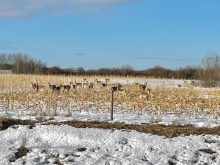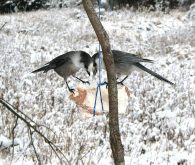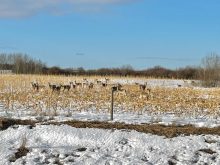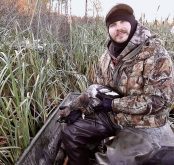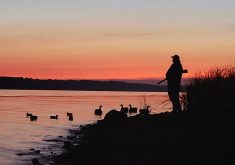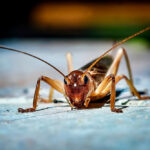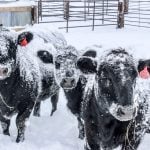In the full bite of autumn, some might be melancholy over the need for insulated overalls and down jackets.
But some of us eagerly await the first snows. That’s how much we deer hunters look forward to this special time.
Hunting licence sales have declined significantly from their peak in the early 1980s, but deer hunting numbers have held up surprisingly well. For many, deer hunting traditions are tied to friends and family. Folks get together at the deer camp or rejoin family on the farm because of the deer hunt.
Read Also

Local farm businesses, groups look forward to Manitoba Ag Days 2026
Most of agriculture is seemingly at Manitoba Ag Days each January: Manitoba agribusinesses and farm groups look forward to connecting with farmers at the 2026 show.
The rituals, memories and anticipation of the hunt are too important to be lost in the sands of time. And for many of us, going into winter without a good supply of venison steaks and sausage is unthinkable.
Manitoba’s deer hunting scene was rocked last fall by the first confirmed case of chronic wasting disease (CWD) in the province. It was only a matter of time. CWD is established in Alberta, Saskatchewan, North Dakota and Minnesota. Our wildlife managers responded quickly, kick-starting CWD contingency plans last fall. Helping Manitoba deer hunters adapt to the reality of CWD is part of the new deer management strategy.
[RELATED] Province expands mandatory CWD sampling
Maria Arlt, Manitoba’s director of wildlife in the Department of Natural Resources and Northern Development, has been heavily involved in the implementation of Manitoba’s new approach. The information here is based on a conversation with her.
New opportunities in 2022
Before we get to CWD, there are new opportunities to discuss. Brutal winters in 2011 and 2014 seriously reduced deer numbers and resulted in years of one-deer and bucks-only restrictions. Numbers returned to good-old-days levels in 2021 and the province brought back an any-deer tag as well as a second, antlerless deer tag in many areas. This year’s white-tailed deer regulations will be similar.
“Last year’s hard winter certainly reduced deer numbers, but there are still sufficient deer to justify additional opportunities for resident hunters,” said Arlt. The list of game hunting areas (GHA) where an antlerless deer tag is available can be found in the 2022 provincial hunting guide (PDF).
This is the chance to hunt mule deer in Manitoba for the first time. These licences, which are tied to Manitoba’s CWD strategy, come at the bargain-basement price of $5.50. Mule deer hunting is allowed in any GHA that borders on the United States or Saskatchewan, plus GHAs 18B, 23, 23A, 30 and 32.
The first licence can be used for any mule deer. Two additional, antlerless mule deer licences may also be purchased. Mule deer are relatively common in western Manitoba, so hunters have the chance to put one in the freezer.
The CWD reality
From its first identification in Colorado in the 1970s, CWD has expanded to 21 states and three provinces. It has become a critical management consideration for deer, elk and other cervids. Apparently derived from scrapie, a prion, brain-wasting disease found in sheep, deer populations suffer once CWD is established. It also requires new hunting rules and best practices for handling carcasses.
There is no evidence that CWD infects humans but its similarity to Creutzfeldt Jacob Disease, a fatal brain condition in humans, is sobering and drives a precautionary approach.

CWD has been present in eastern Saskatchewan for at least two decades, so Manitoba’s CWD surveillance program has focused on our western border. When a confirmed case was found just inside the Manitoba border last fall, the province implemented restrictions and a managed cull of deer in the suspected hotspot area.
According to Arlt, this cull, using helicopters and professional marksmen, had two objectives: reduce deer numbers in what looked to be a hotspot area; and work from a larger sample that would indicate CWD distribution in Manitoba.
“We wanted to know how much of a foothold CWD had established in Manitoba,” she said.
From a sample of about 700 animals, only five tested positive. All were male mule deer taken close to the Saskatchewan border. According to Arlt, “the results told us that CWD is not endemic in Manitoba at this time.”
Put another way, CWD is knocking at the door but not yet living in the house. I’m glad Manitoba made the tough decision to conduct the cull. We needed to know the extent of the problem so wildlife managers were not working in the dark. Manitoba’s new hunting opportunities and carcass handling regulations give us the chance to keep CWD at bay.
Handling deer
I look after any deer from field to plate, so I was especially interested in Manitoba’s regulations and best-practice guidance for carcasses.
Arlt said that, to the extent possible, hunters should process animals at the kill site. Ideally, that would mean taking the meat off the carcass where you killed it and leaving the remains, unless there is a requirement to take head and neck parts to CWD sample depots.
The reason is to minimize transport of animal parts that could harbour CWD.
The mutated prion proteins involved with CWD reside in the brain and spinal cord, so it is important to leave those body parts intact. Prions are almost indestructible in the environment. If CWD is established in an area, moving infected body parts elsewhere can spread the problem.
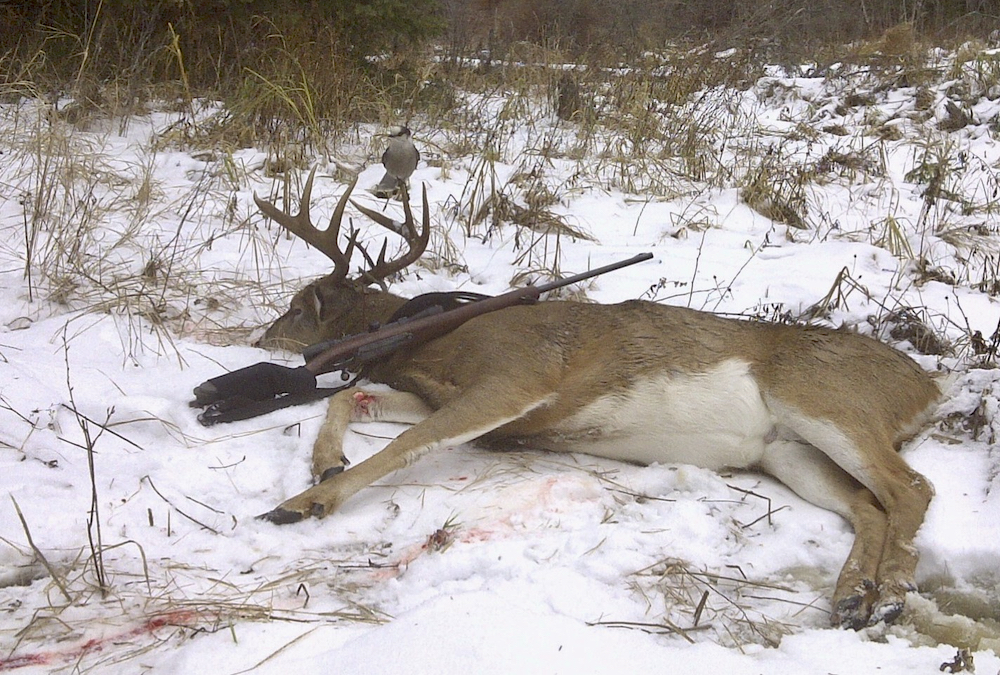
If hunters can’t completely process a carcass on site, they should ensure that all remains after butchering, and especially the head and spinal cord, are double-bagged and taken to landfills that are set up to handle materials of this nature.
My traditional habit of splitting a deer carcass lengthwise down the backbone before processing the meat will now be a thing of the past. All my cuts will be boneless, but I will still retain long bones to make soup stock.
Surveillance
For hunters who take deer in the same GHAs where mule deer hunting is allowed – mostly the GHAs along the U.S. and Saskatchewan borders – there is a requirement drop off the head and upper neck (to about three inches below the base of the neck) at an established sampling station within 48 hours of the kill.
“We know this new legal requirement is an inconvenience for hunters but we want them to know that Manitoba is continuing to add drop-off locations to make this requirement as easy as possible,“ said Arlt.
For a current list of current sample drop-off locations, visit this Manitoba Government webpage (PDF).
More details on providing samples, including tagging requirements and handling heads saved for mounting, can be found in Manitoba’s 2022 hunting guide, available in printed copies and online.
If any samples reveal CWD, hunters will be notified as soon as possible.
Hunters who take animals outside the mandatory sampling GHAs should not submit samples unless the animal seems to have evidence of CWD. In that case, take the appropriate sample to a depot.
I do most of my own butchering except for the breakfast sausage and kolbassa that Archie’s Meats in Starbuck makes from the trim. So, I will follow the best practices guidance by wearing disposable gloves at all times, not cutting into the head or spinal cord and soaking knives and cutting board in a bleach solution for at least five minutes when I’m done.
If taking a head to a taxidermist, check provincial regulations and get guidance from the taxidermist on how to proceed.
As a community, hunters have prided themselves in being wildlife conservation leaders. Today, participating in the CWD sampling program is the most important contribution hunters can make to ensure that deer thrive in Manitoba in the future.




